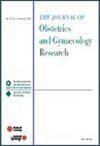Comparison of outcomes of labor induction with dinoprostone vaginal insert (PROPESS) and double balloon cook catheter in term nulliparous pregnancies
Abstract
Objective
This retrospective study aimed to compare the outcomes of dinoprostone vaginal insert (PROPESS) and double balloon cook catheter (DBC) in term nulliparous pregnancies.
Materials and Methods
A total of 1682 cases were enrolled, all of which were divided into two groups: PROPESS and DBC. The primary outcomes were rate of vaginal delivery (VD) and cesarean section (CS) and successful VD within 24 h and CS indications; the secondary outcomes were labor duration, oxytocin augmentation, complications during labor, maternal/neonatal outcomes, and predictors of successful VD within 24 h.
Results
There was no statistical difference in the rates of VD between the PROPESS group (73.74%) and the DBC group (77.73%) (p = 0.36). The VD rate within 24 h was significantly higher in PROPESS group than in the DBC group (55.45% vs. 38.43%, p < 0.001). The occurrence of nonreassuring fetal heart rate (NRFHR) patterns was higher in the CS indications of the PROPESS group than in the DBC group (56.86% vs. 37.81%, p < 0.001). The oxytocin augmentation was significantly lower in the PROPESS group than in the DBC group (52.79% vs. 94.9%, p < 0.001). The incidence of chorioamnionitis was significantly higher in the DBC group as compared with PROPESS group (4.36% vs. 1.34%, p < 0.001), while neonatal outcomes were comparable between the two groups. PROPESS (p < 0.001, odds ratio [OR] 2.478, 95% confidence interval [CI] 1.718–3.574), oxytocin augmentation (p < 0.001, OR 32.759, 95% CI 20.654–51.958), and amniotomy (p = 0.016, OR 1.897, 95% CI 1.331–2.704) were predictors of VD within 24 h.
Conclusion
The effectiveness of delivery was comparable between the two groups. The PROPESS group resulted in a high successful VD rate within 24 h, although accompanied by NRFHR occurrence. Two cases with fetal presentation change (cephalic to breech) and four cases with umbilical cord prolapse were observed in the DBC group. PROPESS, oxytocin augmentation, and amniotomy were associated with VD interval within 24 h.

 求助内容:
求助内容: 应助结果提醒方式:
应助结果提醒方式:


